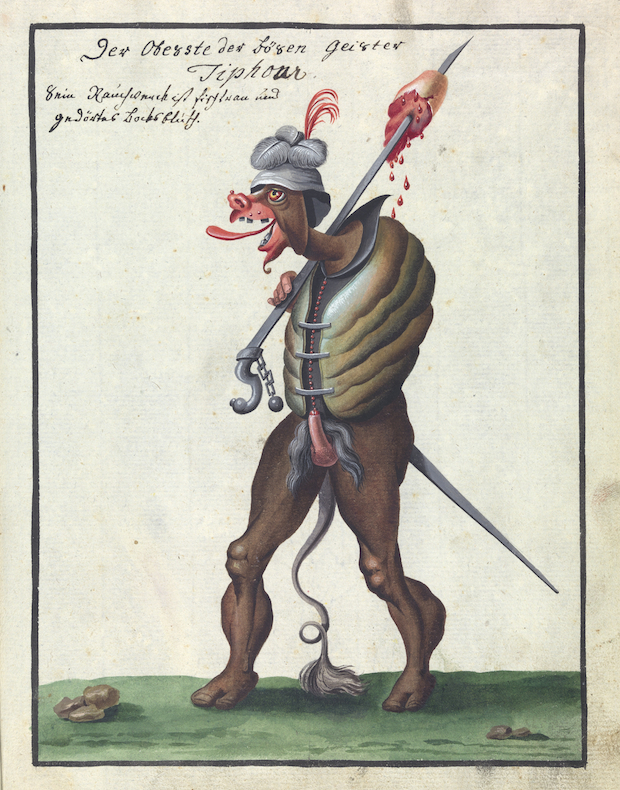
Folio 23 recto, Wellcome Library We make inspiring, affordable museum-quality art for every room and everyone. Demonology and the Media in Dialogue with Trials. Written in German and Latin the book has been dated to around 1775, although it seems the unknown author tried to pass it off as an older relic, mentioning the year 1057 in the title page. Daemonologie takes the form of a dialogue (popular for didactic works) and is divided into three sections: the first on magic and necromancy (the prediction of. Compendium rarissimum totius Artis Magicae sistematisatae per celeberrimos Artis hujus Magistros Compendium of Demonology and Magic, written in German and Italian, ca. of monks and priests in performing occult sciences and ritual magic is analyzed by Rita Voltmer (Debating the Devil’s Clergy. In additon there seem also to be pictures relating to necromancy, the act of communicating with the dead in order to gain information about, and possibly control, the future. The bulk of the illustrations depict a varied bestiary of grotesque demonic creatures up to all sorts of appropriately demonic activities, such as chewing down on severed legs, spitting fire and snakes from genitalia, and parading around decapitated heads on sticks. Illustrated with 31 extraordinary water-colour drawings of demons, and three pages of magical and cabbalistic signs and sigils, etc. In the 16th century, a Dutch doctor-turned-occult-practitioner named Johann Weyer published Pseudomonarchia Daemonum known by its English title as the False Hierarchy of Demons which was a similar compendium written in Latin. With a title page adorned with skeletons and the warning of Noli me tangere (Do not touch me), one quickly gets a sense of the dark oddities lurking inside its pages. The Compendium Of Demonology And Magic, though entirely gripping in its vivid illustrations of satanic creatures, is not the only manuscript relating to witchcraft from earlier centuries.
COMPENDIUM OF DEMONOLOGY AND MAGIC FULL
The full Latin title of Compendium rarissimum totius Artis Magicae sistematisatae per celeberrimos Artis hujus Magistros, roughly translates to "A rare summary of the entire Magical Art by the most famous Masters of this Art". An Encyclopdia of Occultism: A Compendium of Information on the Occult Sciences, Occult Personalities, Psychic Science, Magic, Demonology, Spiritis (Hardcover).


Written in German and Latin the book has been dated to around 1775, although it seems the unknown author tried to pass it off as an older relic, mentioning the year 1057 in the title page.A selection of pages from an eighteenth-century demonology book comprised of more than thirty exquisite watercolours showing various demon figures, as well as magic and cabbalistic signs. The bulk of the illustrations depict a varied bestiary of grotesque demonic creatures up to all sorts of appropriately demonic activities, such as chewing down on severed legs, spitting fire and snakes from genitalia, and parading around decapitated heads on sticks. The full Latin title of Compendium rarissimum totius Artis Magicae. With a title page adorned with skeletons and the warning of Noli me tangere (Do not touch me), one quickly gets a sense of the dark oddities lurking inside its pages. 18th century demonology book showing various demon figures, as well as magic and. A rare summary of the entire Magical Art by the most. The full Latin title of Compendium rarissimum totius Artis Magicae sistematisatae per celeberrimos Artis hujus Magistros, roughly translates to "A rare summary of the entire Magical Art by the most famous Masters of this Art". Compendium rarissimum totius Artis Magicae sistematisatae per celeberrimos Artis hujus Magistros.

The Declaration of Independence was signed less than a year later. This book was published with a "DO NOT TOUCH" warning on its cover.

1775 looks like it was an interesting year in demonology and magic. Compendium rarissimum totius Artis Magicae sistematisatae per celeberrimos Artis hujus Magistros Compendium of Demonology and Magic, written in German and.


 0 kommentar(er)
0 kommentar(er)
